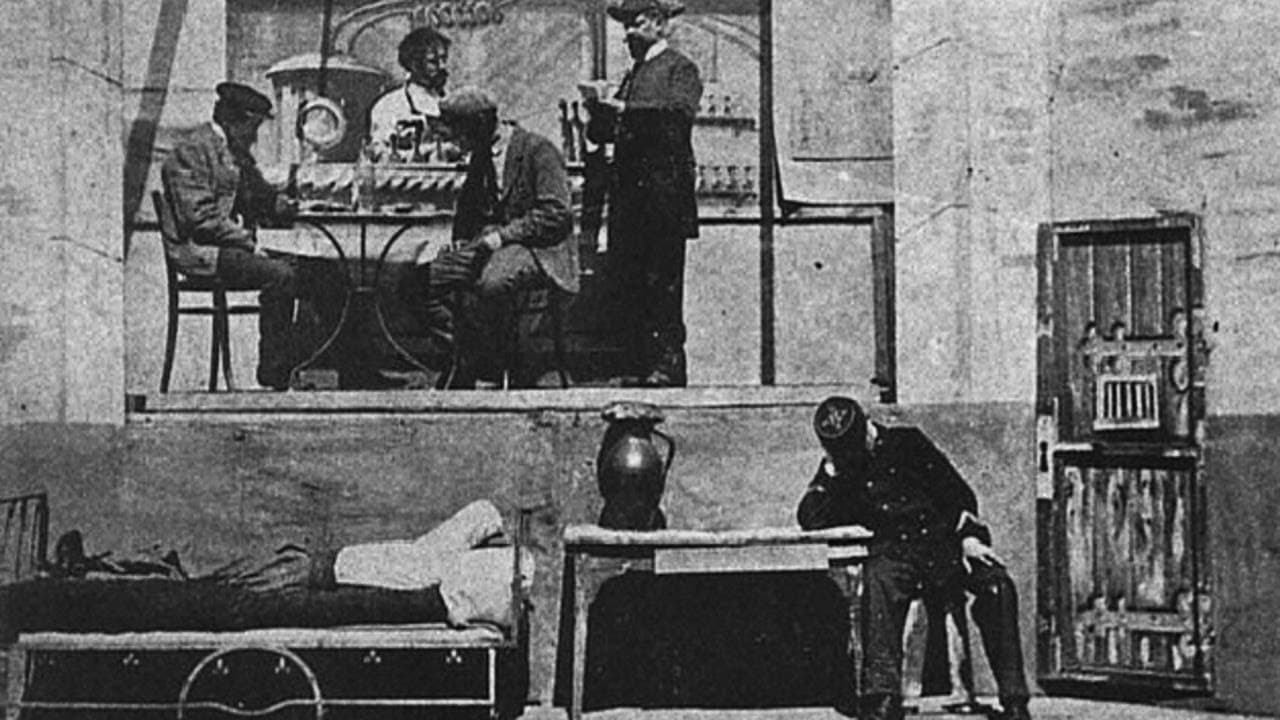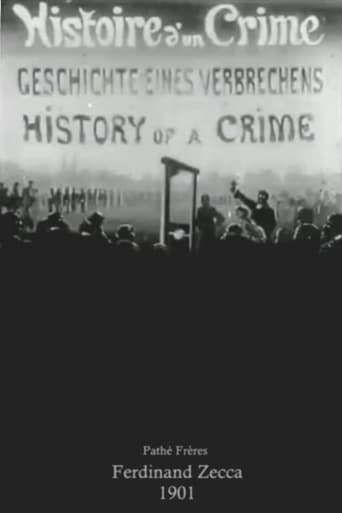

This film was French directer Ferdinand Zecca's first true masterpiece. It is a very impressive film for 1901 for several reasons. First of all, it was made before Méliès's "A Trip to the Moon" which is considered one of the most important early films because of its length and story-telling. However, "History of a Crime" is proof that before Méliès's film other filmmakers were also trying to make films with a plot. While the plot here is simple, it is told in seven different scenes and there is some gore and violence too!The story here is about a man murdering a guy and robbing his safe. He's caught though and condemned to death. The highlight in the whole film is the jail cell scene because here we actually get some background about the robber's past. The ending where the man's head is chopped off via guillotine has some interest. Supposedly, I've read that they'd stop playing the film and let all the women and children out of the theater before the guy's head came off!Extremely ground-breaking for 1901. Anyone interested in the history of movies should see it.
... View MoreFerdinand Zecca's "History of a Crime" is actually a good example of a film where it is really difficult to understand the action. You get glimpses of it like the early safe-cracker scene or the execution in the end, but most of the stuff in-between stays a mystery. Of course, they did not have intertitles or sound yet 115 years ago, but still I wish they could have made this story easier to understand. Zecca was among France silent film pioneers as well, even if he never reached the popularity of Méliès and Lumière. His film here runs for 5 minutes which is pretty long for that era already and yet there are still longer films out there. All in all, not among the best early silent movies. Not recommended.
... View MoreThis is an ambitious effort for a movie made in 1901. Not only is the plot rather involved, taking several scenes to tell the whole story at a time when most narrative movies consisted of only a handful of developments at the most, but it also experiments with its techniques. Not all of it works, but despite some flaws, it's interesting, and it's relatively successful at what it set out to do.The story combines a morality play, of the kind that became very common over the following decade, with a couple of efforts to provide commentary and/or additional background on the events. None of that was entirely new, but it was rather enterprising to try to put so much together at once. The story itself is not so interesting as some of the ideas that they used in filming it.In terms of technique, the highlight is a dream sequence that fills in the audience on the background of the criminal who is the main character. The technical side now looks rather crude, but it was certainly a worthwhile effort, and at least the idea was good, as an attempt to add some depth to an otherwise straightforward story.Another experimental device is the use of dissolves each time the scene changes. There's no reason why it couldn't work, and this was not the only movie of the era to try it, but of course it did not catch on. Still, the combination of distinctive features gives this short movie some interest over and above the story content and the sometimes rudimentary techniques.
... View MoreAn early attempt by Zecca, Pathe's leading director in this period, at scene changes. All of them are done by fade. This technique would be abandoned, resulting in the standard French look through the 1920s, most notably in Louis Feuillade's movies, in which the camera sits in one location. The result is a much more subjective camera than the typical American style.
... View More